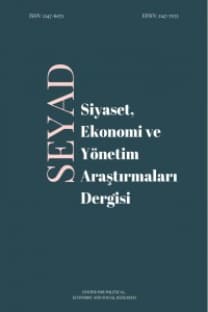Kara Para Aklamada Atık Ticareti Yönteminin Rolü
Atık ticareti aracılığı ile değer transferi yöntemi resmi finansal kurumlar kullanılmadan atığın içinde değer aktarımı için kullanılmaktadır. Atık ticareti yöntemi bankacılık sisteminde yüksek işlem maliyetlerinden kurtulmak, denetimden kaçınma ve transfer risklerinden kaçınma gibi çeşitli amaçlarla tercih edilmektedir. Ayrıca, tersine para aklamaya imkân sağlayan ve evrak gerektirmeyen gayri resmi bir değer aktarım mekanizması olan atık ticareti yöntemi, gizlilik ve personel güvenliği ön planda olduğu için terör örgütleri ve organize suç grupları tarafından istismar olasılığı ile çevrilidir. Küreselleşme ve toksikomani sömürgeciliği çağında değer tipik olarak atık ticaret ağı aracılığıyla gelişmiş ülkelerden gelişmekte olan veya gelişmemiş ülkelere aktarılır ve atık ticareti yöntemi yoluyla yapılan değer transferi, hükümetin başarısızlığına neden olabilir, ekonomi güvenliğini tehdit edebilir, hatta gelişmekte olan ekonomiler için daha yüksek sosyal maliyetler oluşturabilir. Bu fenomenin kara para aklama doğası şimdiye kadar mevcut araştırmalarda ihmal edilmiştir. Çalışmada atık ticareti yöntemine, zehirli sömürgecilik ve atık ticareti yönetiminin kara para aklama üzerindeki rolüne ve bu bağlamda organize suç gruplarının istismarını önlemeye yönelik geliştirilebilecek stratejilere dikkat çekilmektedir.
Anahtar Kelimeler:
Atık Ticareti Yöntemi, Değer Transferi, Kara Para Aklama
The Role of Waste Trade Method on Money Laundering
The waste trade method is used to transfer value inside the waste without the use of formal financial institutions. It can be used for different reasons, such as reducing high transaction costs in the banking system, minimizing auditing and transfer risks. Also, the waste trade method as an informal value transfer mechanism, which offers reverse money laundering and requires no paperwork, is surrounded by the possibility of abuse by terrorist organizations and organized crime groups, since secrecy and personal security are at the foreground. In an era of globalization and toxic colonialism, the value is typically transferred from developed countries to emerging or undeveloped countries through a waste trade network and the value transfer by waste trade can cause government failure, threaten economic security and even higher social costs for emerging economies. To date, the essence of money laundering of this phenomenon has been neglected in current research. This study will highlight the method of waste trade, the role of toxic colonialism and waste trade in third-party money laundering. And, in this sense, strategies can be established to mitigate the violence of terrorist organizations and organized crime groups.
Keywords:
Waste Trade Method, Value Transfer, Money Laundering,
___
- Agnew, J. A. (2018). Globalization and sovereignty : beyond the territorial trap. Lanham, Maryland: Rowan & Littlefield.
- EFIG. (2015). Why is cash still king? A strategic report on the use of cash by criminal groups as a facilitator for money laundering. Financial Intelligence Group. Europol. The Hague.
- European Environment Agency. (2012). Movements of waste across the EU’s internal and external borders. EEA Report 7/2012. Copenhagen.
- EUROSTAT. (2020). Turkey: main destination for EU’s waste - Product - Eurostat. Access date: September 5, 2020. https://ec.europa.eu/eurostat/en/web/products-eurostat-news/-/DDN-20200416-1.
- FATF. (2001). FATF IX Special Recommendations. Access date: September 7, 2020. http://www.fatf-gafi.org/media/fatf/documents/reports/FATF Standards - IX Special Recommendations and IN rc.pdf
- FATF. (2006). Trade Based Money Laundering . Access date: September 8, 2020. https://www.fatf-gafi.org/media/fatf/documents/reports/Trade%20Based%20Money%20Laundering.pdf
- FATF. (2008). Terrorist Financing. Access date: September 9, 2020. http://www.fatf-gafi.org/media/fatf/documents/reports/FATF Terrorist Financing Typologies Report.pdf
- FATF. (2019). Methodology for Assessing Compliance with the FATF Recommendations and the Effectiveness of AML/CFT Systems. Access date: September 9, 2020. http://www.fatf-gafi.org/publications/mutualevaluations/documents/fatf-methodology.html
- FATF and MENAFATF. (2015). Money Laundering Through the Physical Transportation of Cash. Access date: September 9, 2020. https://www.fatf-gafi.org/media/fatf/documents/reports/money-laundering-through-transportation-cash.pdf
- Freeman, M. (2011). The Sources of Terrorist Financing: Theory and Typology. Studies in Conflict & Terrorism, 34(6), 461–475.
- Krieger, T., & Meierrieks, D. (2011). Terrorist Financing and Money Laundering. Access date: September 9, 2020. https://ssrn.com/abstract=1860069
- Pohoaþã, I., & Caunic, I. (2007). Informal Value Transfer System – Hawala. Theoretical and Applied Economics, 4(509, 3–8. Access date: September 7, 2020. http://store.ectap.ro/articole/201.pdf
- Semuels, A. (2019, March 5). Is This the End of Recycling? The Atlantic. Access date: September 9, 2020. https://www.theatlantic.com/technology/archive/2019/03/china-has-stopped-accepting-our-trash/584131/
- Stamler, R. T., Marschdorf, H. J., & Possamai, M. (2014). Fraud Prevention and Detection. New York: Routledge
- Strange, S. (1996). The retreat of the state : the diffusion of power in the world economy . Cambridge: Cambridge University Press.
- The Economist. (2016, March 7). Why big banknotes may be on the way out. The Economist (Online). Access date: September 10, 2020. https://www.economist.com/the-economist-explains/2016/03/07/why-big-banknotes-may-be-on-the-way-out
- Thony, J.-F. (2002). Money Laundering And Terrorism Financing: An Overview. IMF. Access date: September 10, 2020. http://www.imf.org/external/np/leg/sem/2002/cdmfl/eng/thony.pdf
- United Nations Environment Program. (1992). The Basel Convention at a glance.
- Vittori, J. (2011). Terrorist Financing and Resourcing (1st ed.). New York: Palgrave Macmillan US
- Williams, P. (2008). “Terrorist financing and organized crime: Nexus, appropriation, or transformation?” in Thomas J. Biersteker & Sue E. Eckert (Eds.), Countering the Financing of Terrorism. London: Routledge. (pp. 126–149).
- ISSN: 2147-6071
- Yayın Aralığı: Yılda 2 Sayı
- Başlangıç: 2014
- Yayıncı: Politik Ekonomik ve Sosyal Araştırmalar Merkezi
Sayıdaki Diğer Makaleler
Eski ve Yeni Kırılgan Beşli Ülkelerinde Dış Borçlar Sürdürülebilir mi? Dinamik Panel Veri Analizi
Kara Para Aklamada Atık Ticareti Yönteminin Rolü
Asya Ülkelerinde Finansal Gelişme, Ekonomik Büyüme ve Enflasyon İlişkisi
Enerji Tüketimi, Ekonomik Büyüme ve Finansal Gelişme İlişkisi: Türkiye Örneği
